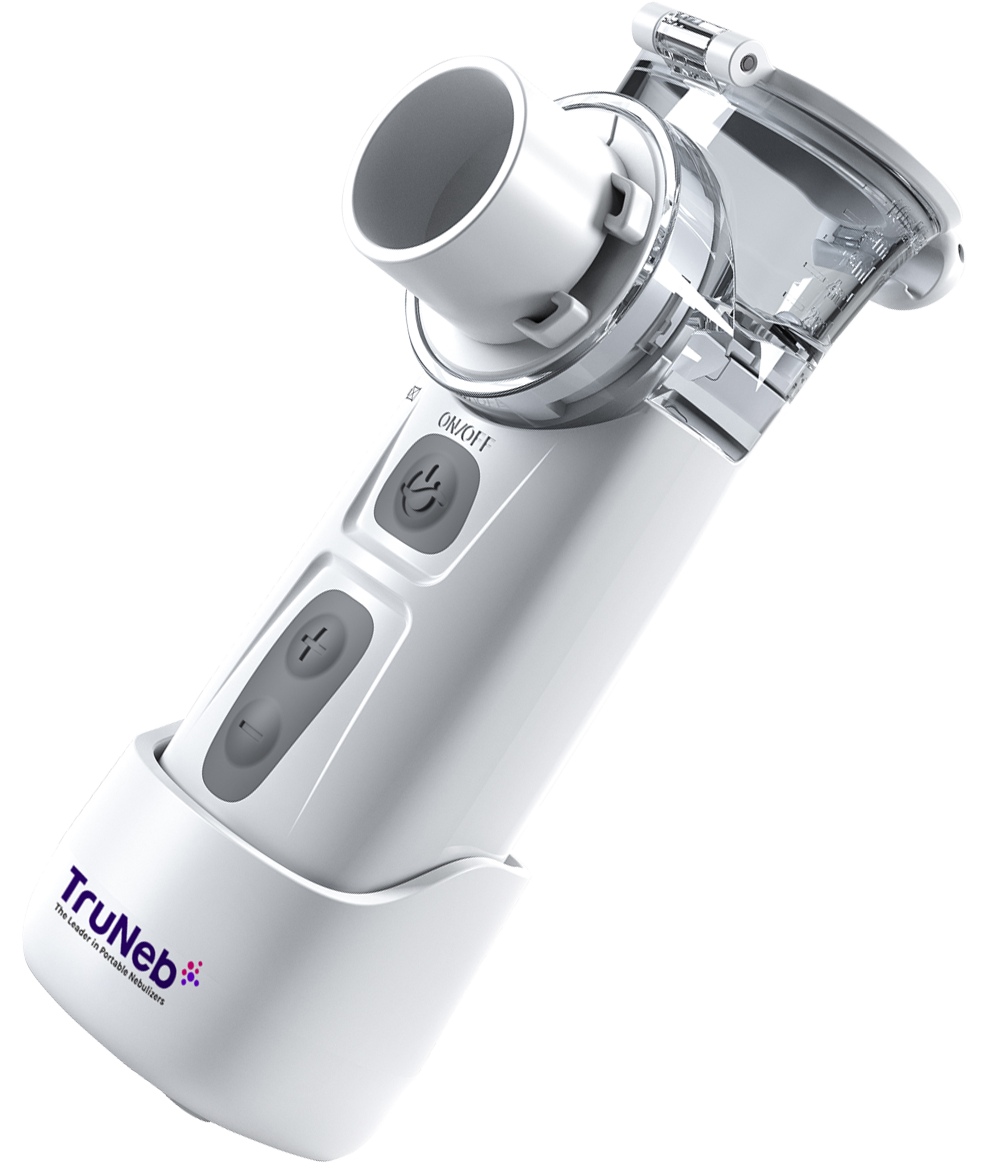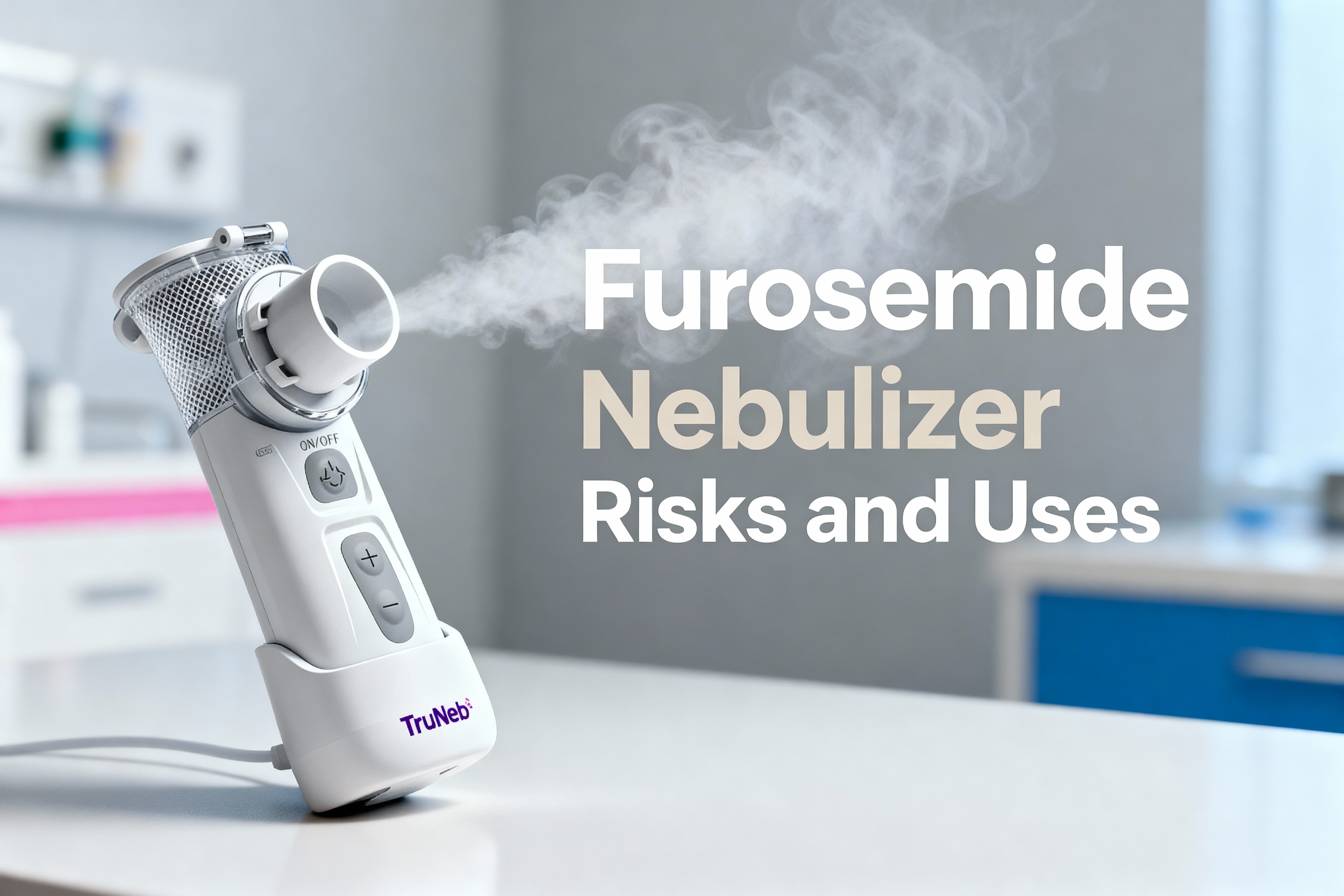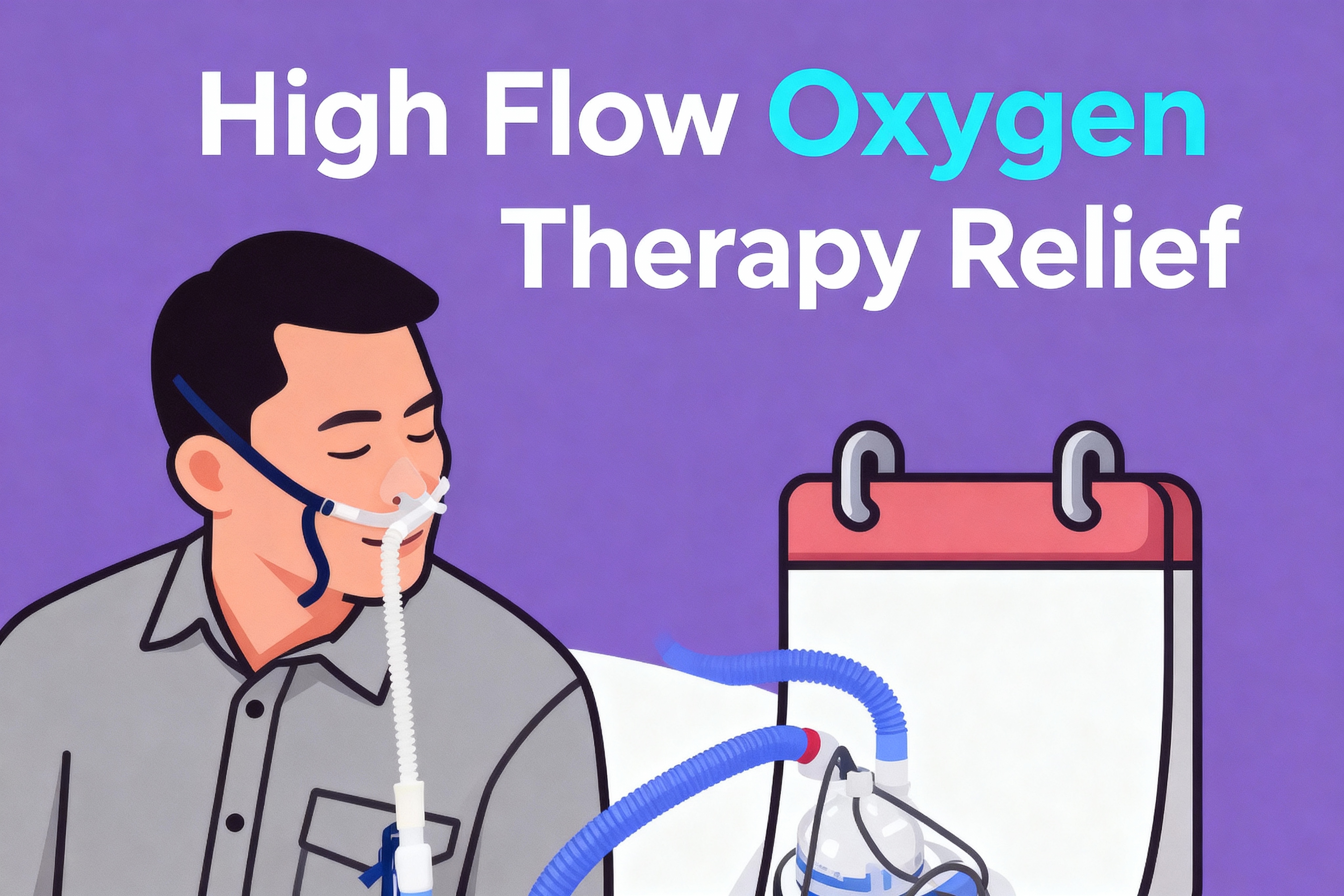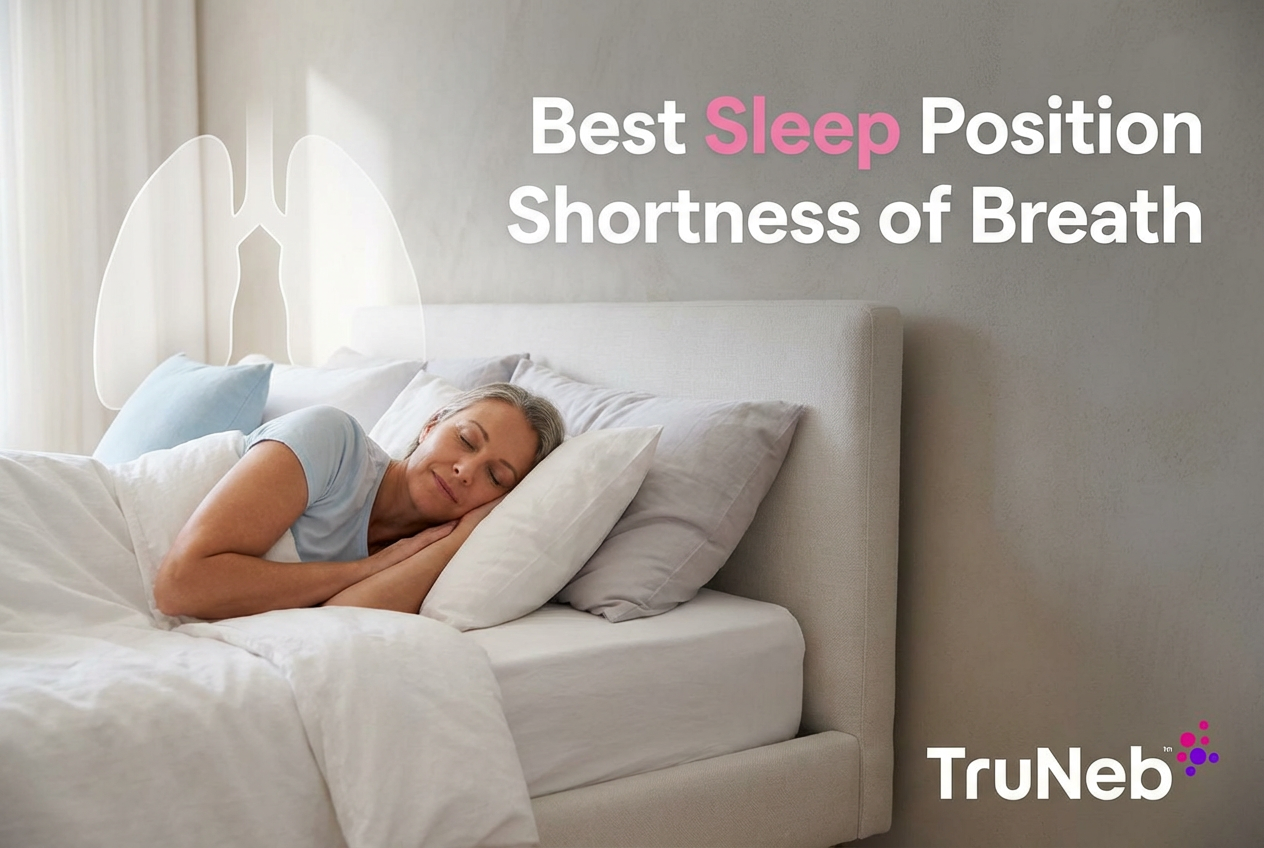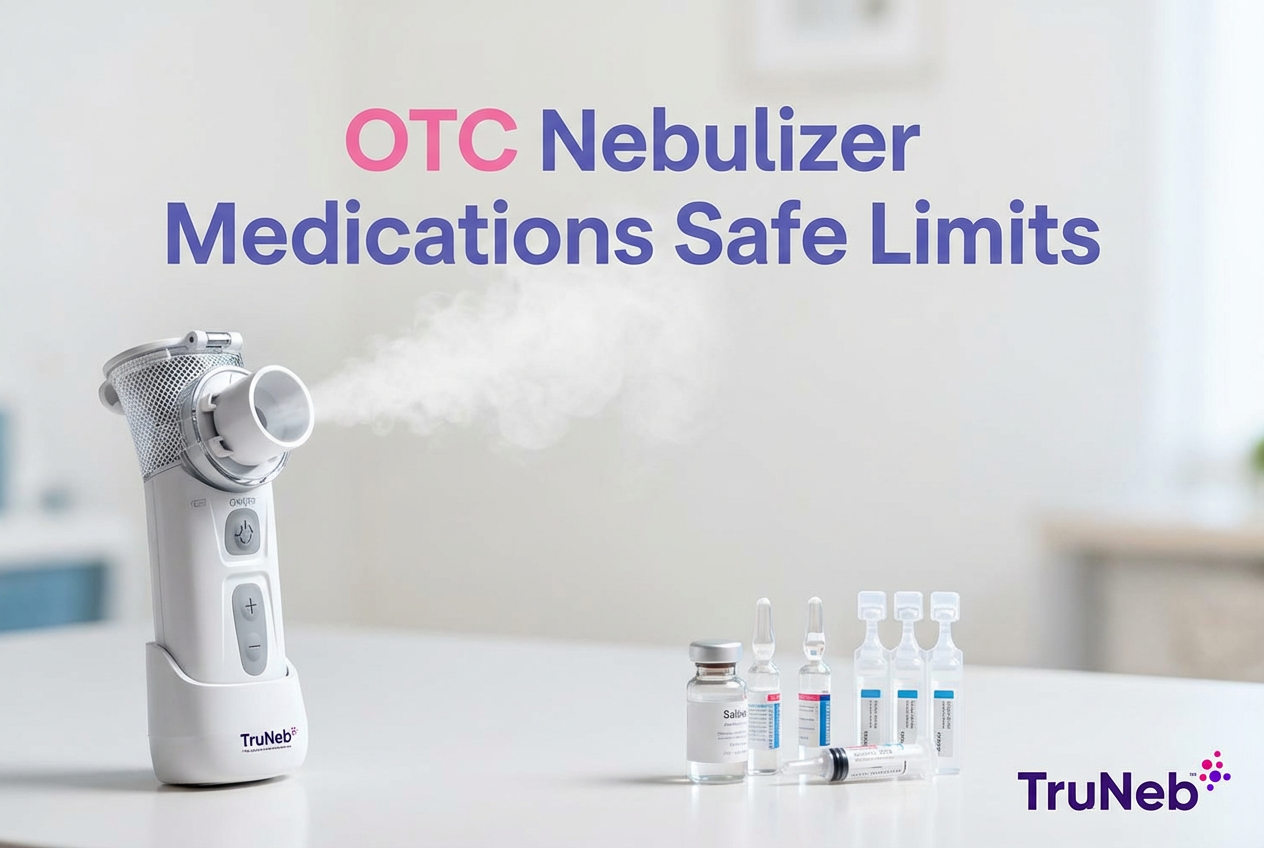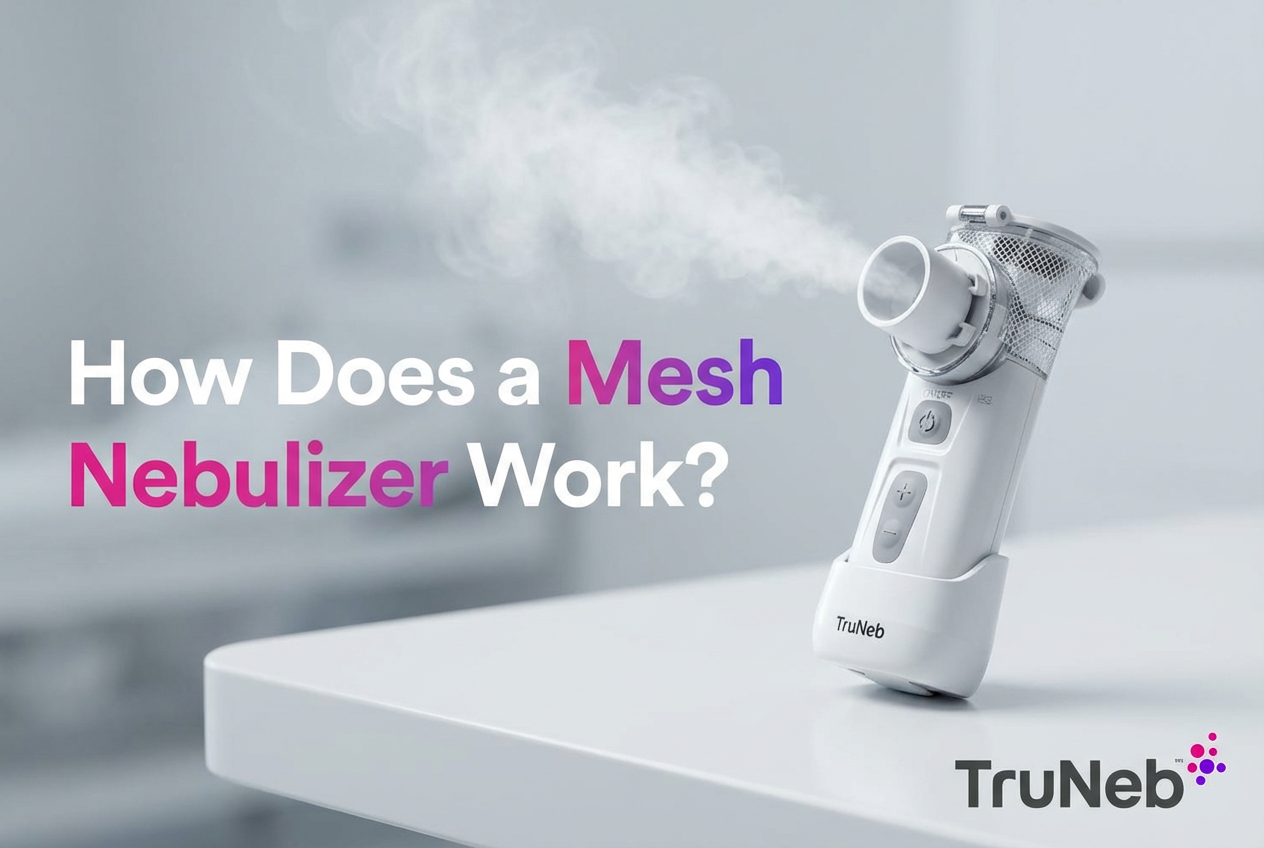On this page
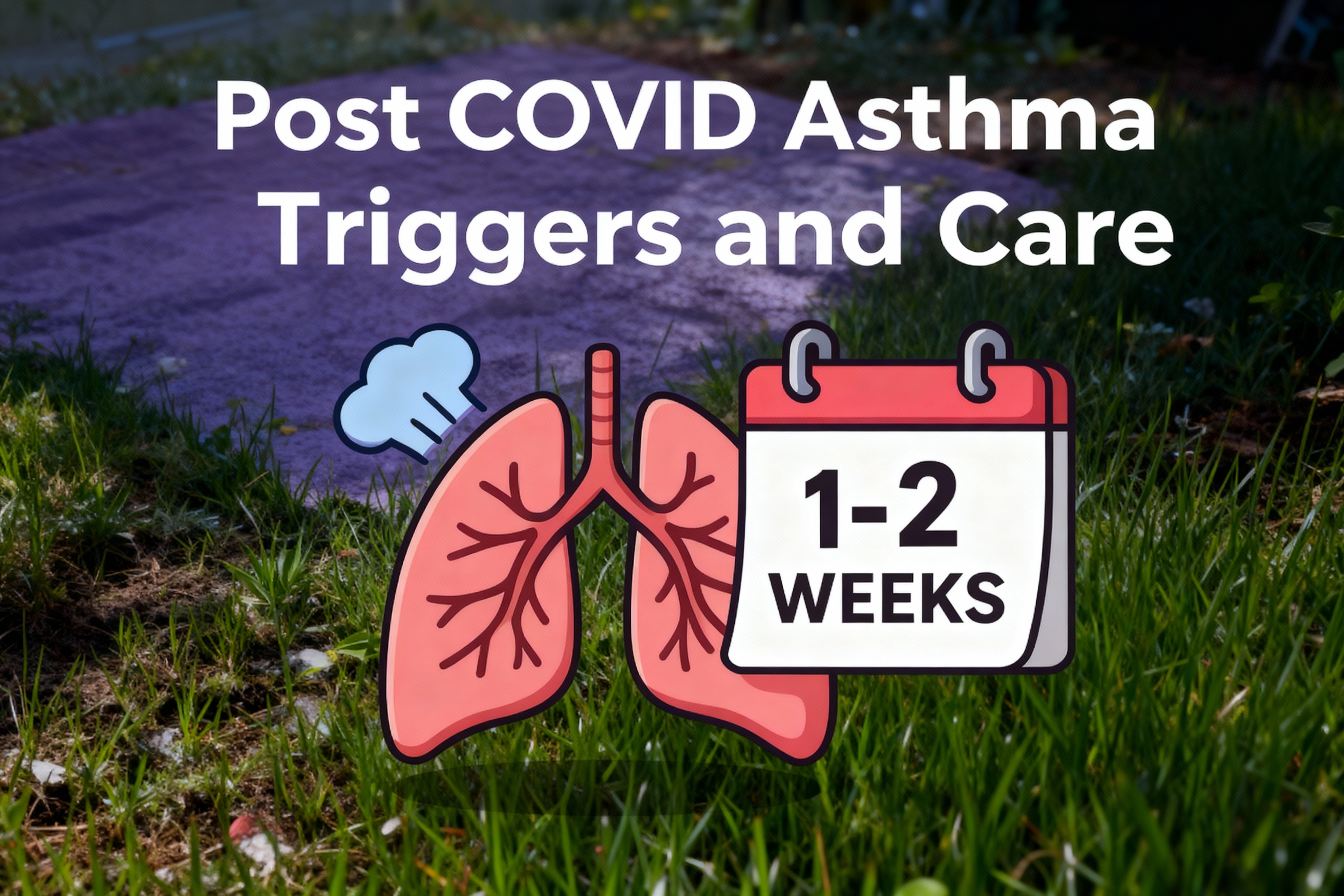
Can COVID-19 Cause New-Onset Asthma?
Yes, it can. But it's still uncommon.
Post-COVID asthma means new or worse asthma symptoms that start weeks after a COVID-19 infection and continue beyond the usual recovery period. For some people, COVID acts like a strong trigger. They recover from the virus, then notice wheezing, chest tightness, or a nagging cough that was never there before.
Large studies have found that people who had COVID-19 are about twice as likely to be diagnosed with asthma in the following months as people who never had the virus. A 2023 study in Respiratory Research also showed that many people who already had asthma needed stronger treatment after they got COVID-19.
That sounds scary, but it's still important to keep the numbers in perspective. Even with about a doubled risk, only a small percentage of people develop asthma after COVID. Most people who get COVID don't go on to develop post covid asthma. When asthma after COVID does happen, it can usually be managed with standard asthma medicines and a clear plan.
Rule of thumb: if breathing problems last more than 4 to 8 weeks after COVID, it's worth asking your doctor if post-COVID asthma could be part of the cause.
Why and How COVID-19 Can Trigger Asthma Symptoms
COVID-19 infects cells that line your nose, throat, and lungs. Your immune system fights back by sending in a surge of immune cells and chemical signals to clear the virus.
In most people, the inflammation fades as they recover. In a smaller group, that inflammation seems to hang around and leave the airways extra sensitive. Doctors call this bronchial hyperreactivity, meaning your airways overreact to triggers like cold air, exercise, or irritants.
When airways become hyperreactive, they are more likely to tighten or swell when you:
- Breathe in cold air
- Exercise or laugh hard
- Are around smoke, dust, or pollen
Some people also show higher levels of eosinophils, a type of white blood cell often seen in classic allergic asthma. Case reports after COVID-19 have found airway inflammation that looks almost the same as long-term asthma.
You can think of COVID like a storm that passes through your lungs. For most people the sky clears. For others, the storm leaves behind damage that makes the "road" of your airways rough and easy to irritate.
When this lingering airway inflammation leads to recurring wheeze, cough, and chest tightness, doctors sometimes diagnose it as asthma.
Researchers are still studying why this happens to some people and not others, but genes, allergies, and other health problems all seem to play a role.
Lingering airway inflammation and hyperreactivity after COVID-19 are key reasons some people go on to develop asthma-like symptoms after COVID.
Post-COVID Asthma vs. Long COVID: How to Tell the Difference
Shortness of breath after COVID-19 is very common. Sometimes it's part of long COVID. Sometimes it's a sign of asthma after COVID. In some people, it's both.
If you're dealing with post covid shortness of breath, it can be hard to know whether you're facing long COVID, asthma after COVID, or a mix that some people call long covid asthma.
In simple terms, post-COVID asthma usually brings wheezing and symptoms that flare with triggers, while long COVID alone tends to cause more constant fatigue and breathlessness without classic asthma patterns.
Here are common symptoms that show up in both:
- Feeling short of breath, especially with activity
- Chest tightness or pressure
- A dry or mucus-filled cough
- Lower exercise tolerance compared to before you were sick
Clues that point more toward asthma include:
- Wheezing (a whistling sound when you breathe out)
- Symptoms that flare with triggers like exercise, cold air, or pollen
- Cough or tightness that wakes you up at night
- Clear relief after using a quick-relief inhaler, if you have one
Clues that point more toward long COVID alone include:
- Deep fatigue, even when your breathing tests are normal
- Brain fog, headaches, or trouble concentrating
- Fast heart rate, dizziness, or chest pain that is not tied to deep breaths
- Little or no change with asthma inhalers
A side-by-side view can also help:
| Feature | Post-COVID asthma | Long COVID breathing issue |
|---|---|---|
| Wheezing | Common | Uncommon |
| Night-time cough | Common | Can happen, but less tied to specific triggers |
| Triggers (exercise, cold air, allergens) | Often clear | Less clear or unpredictable |
| Response to bronchodilator inhaler | Usually improves symptoms | Usually doesn't change much |
This table is only a guide. The only way to know for sure is to let a doctor examine you and, if needed, test your lungs.
If you're still short of breath weeks after COVID, it's worth a lung checkup to be sure what's going on.
How Doctors Diagnose Asthma After COVID
When you see a doctor for ongoing breathing problems after COVID-19, they'll start with questions about:
- How bad your COVID illness was and when it happened
- What your breathing feels like now and what makes it better or worse
- Any history of asthma, allergies, or eczema in you or your family
Then they'll examine you and usually order pulmonary function tests (PFTs) such as:
- Spirometry: you blow into a machine that measures how much and how fast you can exhale. The test is repeated after a bronchodilator medicine such as albuterol. If your numbers improve a lot, that supports asthma.
- Peak flow monitoring: a small handheld meter you can use at home over days or weeks to see how your lung function changes.
- Bronchial challenge tests: for example, a methacholine or exercise challenge when your story sounds like asthma but spirometry looks normal. Even when basic spirometry looks normal, these challenge tests can uncover asthma that's hiding.
- Imaging: a chest X-ray or CT scan if your doctor wants to rule out pneumonia, lung scarring, or blood clots related to COVID.
Sometimes they'll also check blood work, like an eosinophil count, to look for allergy-type inflammation.
If your symptoms are strong, confusing, or not improving, your primary care doctor can refer you to a pulmonologist or allergy and asthma specialist.
Doctors diagnose asthma after COVID using lung function tests like spirometry, along with your symptom history and, if needed, imaging and blood work.
Knowing what to expect at the visit can make it easier to speak up about your symptoms and get clear answers.
Treating Asthma After COVID-19
Medications and Inhalers for Post-COVID Asthma
Treatment for post covid asthma usually uses the same inhalers and medicines doctors rely on for asthma from any cause. Treatment for asthma after COVID follows standard asthma guidelines, not experimental or one-off cures. Your plan is adjusted to fit how frequently you have symptoms and how limited you feel.
Common parts of a treatment plan include:
- Quick-relief inhaler: a short-acting bronchodilator such as albuterol to relax tight airway muscles during a flare.
- Daily controller inhaler: an inhaled corticosteroid to reduce airway swelling and cut down on flare ups.
- Combination inhaler: a mix of inhaled steroid and a long-acting bronchodilator when symptoms are more frequent.
- Short course of oral steroids: medicines like prednisone during severe attacks or hospital stays.
Inhalers are usually the first-line treatment, with options like nebulizers or biologic injections considered if symptoms stay hard to control.
For people who already had asthma, doctors usually "step up" treatment for a time after COVID, then slowly "step down" if control improves.
If your asthma stays moderate to severe despite high-dose inhalers, a specialist might discuss biologic injections. These medicines target specific immune pathways and are usually given in a clinic every few weeks.
Your doctor can also give you a written asthma action plan so you know what to do on good days, on bad days, and in emergencies.
Treatment for asthma after COVID relies on the same inhalers and medicines used for other types of asthma, adjusted to how frequently you have symptoms.
Well-controlled post-COVID asthma usually means you can sleep through the night, stay active, and rarely need your rescue inhaler.
Nebulizers and TruNeb in Treating Post-COVID Asthma
Some people find it hard to use inhalers correctly when their chest feels tight or when they're very tired after COVID. A nebulizer can help in those moments.
A nebulizer turns liquid medicine into a fine mist you breathe in normally. It is often used to deliver:
- Short-acting bronchodilators like albuterol
- Inhaled steroids such as budesonide
- Sterile saline, and in select cases hypertonic saline, to help thin thick mucus
Traditional compressor nebulizers work well but can be bulky and loud. Newer mesh nebulizers are smaller, quieter, and easier to carry.
The TruNeb™ Portable Mesh Nebulizer is one example of a handheld, battery-powered device that fits easily into daily routines. It uses vibrating mesh technology to create an ultra-fine mist and is designed to work with common inhalation medicines your doctor prescribes. You can buy the device without a prescription and use it alongside your regular asthma plan.
Avoid putting essential oils or homemade mixtures into a nebulizer, and don't use steam inhalers for prescription breathing medicines; they're not designed for that.
If your doctor suggests saline to help with mucus that lingers after COVID, they sometimes recommend medical-grade hypertonic saline. TruNeb offers sterile 3% hypertonic saline and 7% hypertonic saline solutions made for nebulizers. Hypertonic saline is usually reserved for people whose doctor thinks thicker mucus is a major issue, and it isn't right for everyone with asthma. These stronger saline solutions can loosen mucus, but they can also irritate sensitive airways and trigger more wheezing or tightness if they aren't appropriate for you, so hypertonic saline should only be used under your doctor's guidance.
You can also read more about how hypertonic saline works in breathing treatments in TruNeb's guide on bronchiolitis and saline therapy.
Only use the medicines and saline strengths in your nebulizer that your doctor has recommended, and use them exactly as directed.
Always follow your doctor's instructions for which medicines and saline strengths to use in your nebulizer, and how frequently.
The right nebulizer does not replace your care team, but it can make it easier to take the treatments they recommend at home or on the go.
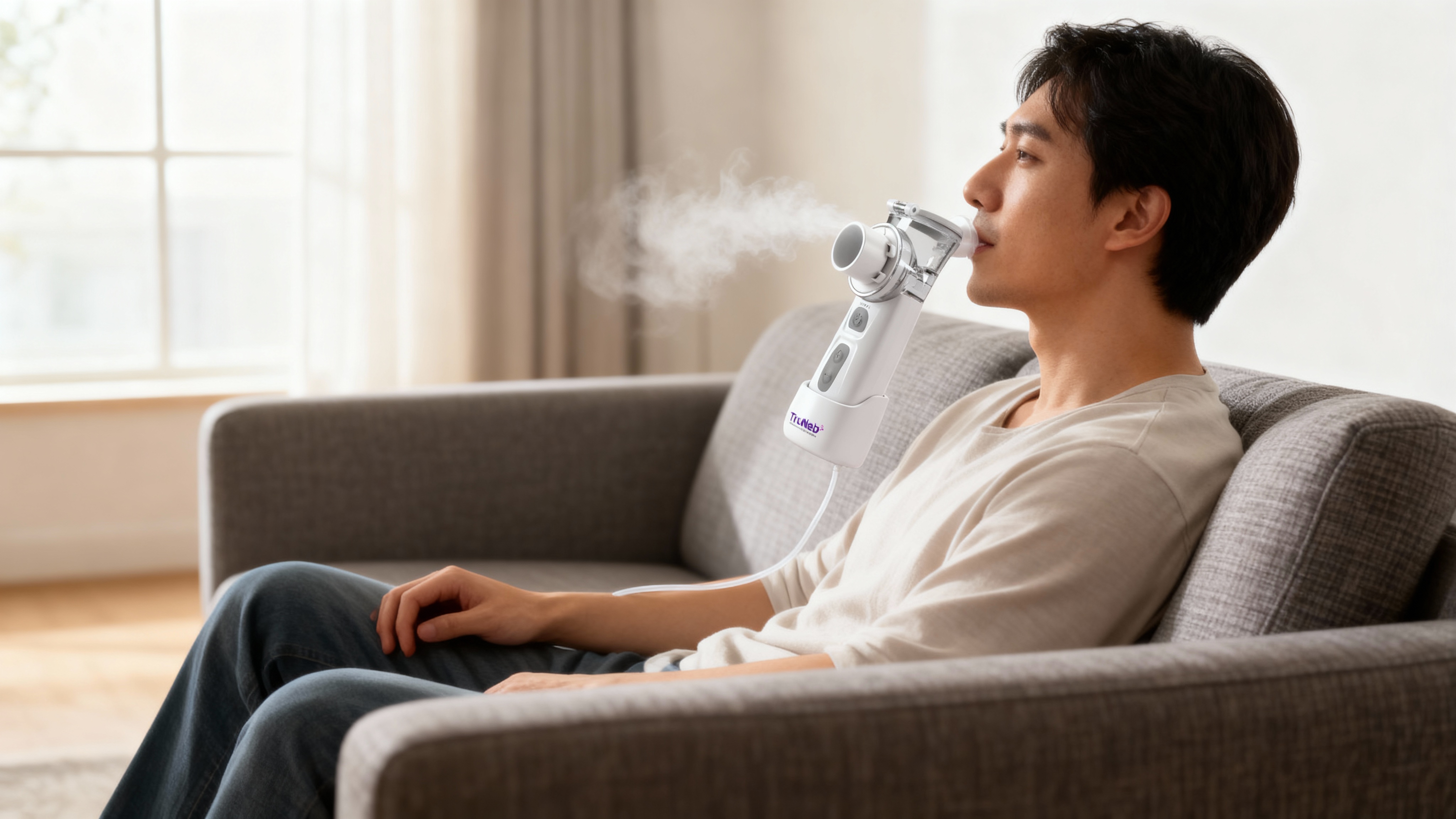
Self-Care and Rehab While You're Recovering
Medicine handles the inflammation, but daily habits help your lungs feel stronger over time. Self-care doesn't replace your asthma medicines; it works alongside them.
Simple daily habits like breathing exercises, gentle movement, and avoiding smoke can support your lungs as you recover from COVID-related asthma.
Helpful steps include:
- Breathing exercises such as diaphragmatic breathing and pursed-lip breathing
- Walking or light activity, starting slow and building up, which can help rebuild stamina
- Avoiding smoke, vape aerosols, and strong fumes
- Using dust covers, filters, or other tools if allergies seem to trigger your breathing
- Drinking enough water so mucus stays easier to clear
Some people find a formal pulmonary rehabilitation program helpful, especially if they feel very deconditioned after COVID.
Anxiety and stress can make any breathing symptom feel worse. Relaxation, counseling, or support groups can help you feel more in control while your lungs heal.
Small, steady steps add up; they tell your lungs and your nervous system that breathing is becoming safer again.
When to Seek Medical Help for Breathing After COVID-19
Knowing when to get help keeps you safer.
⚠️ Seek emergency care or call 911 right away if:
- You're gasping for air or can't say a full sentence
- Your lips, face, or fingertips look blue or gray
- Your rescue inhaler isn't helping at all
- You have severe chest pain, confusion, or pass out
Emergency care can quickly give you oxygen and treatments you can't get at home.
Schedule a doctor visit soon if:
- You're still short of breath 4 to 8 weeks after COVID
- You have new wheezing, a daily cough, or chest tightness
- Your known asthma suddenly needs more rescue medicine than usual
- Your symptoms limit your normal walking, work, or sleep
If basic treatments don't help, or if the diagnosis doesn't feel clear, ask about seeing a pulmonologist or asthma specialist or a long COVID clinic.
Breathing trouble after COVID is common, but you never have to "just live with it" without a full checkup.
Long-Term Outlook for Post-COVID Asthma
Doctors are still learning how long post-COVID asthma lasts. Early research and real-world experience suggest a mixed picture.
Some people have asthma-like symptoms for a few months, then slowly improve and can lower or stop their controller medicines under medical guidance. Others remain sensitive and meet criteria for chronic asthma that needs long-term treatment.
Studies of people with asthma who went through COVID show that control usually worsens at first but can return with stepped-up inhaler therapy and time.
Post-COVID asthma doesn't always mean permanent lung damage; for some people, the airway changes after COVID settle down over time, especially with good asthma control.
Your outcome depends on a few key things:
- How severe your COVID infection was
- Whether you had asthma or allergies before
- Smoking history and other lung conditions
- How early and consistently you follow a treatment plan
Most people with post-COVID asthma can reach good control over time with the right treatment plan.
The goal is not a perfect lung, but a calm, predictable one that lets you do the things you care about.
Conclusion & Key Takeaways
- COVID-19 can trigger new or worse asthma in some people, but even with a higher risk it's still an uncommon outcome.
- Post-COVID asthma is usually managed with familiar tools like inhalers, sometimes nebulizers or biologic medicines, plus supportive lifestyle habits.
- Ongoing shortness of breath after COVID deserves medical attention so your doctor can check for asthma and other causes.
- With the right treatment plan and follow-up, most people regain good asthma control and get back to normal activities over time.
FAQs About Asthma After COVID-19
Can the COVID-19 vaccine cause asthma or make asthma worse?
Current evidence doesn't show that COVID-19 vaccines cause asthma. Major health groups encourage vaccination for people with and without asthma because it lowers the risk of severe infection and hospital stays. Fewer severe infections likely mean fewer chances for post-COVID asthma to develop.
Can kids develop asthma after having COVID-19?
Yes, it's possible. Children sometimes develop asthma after viral infections, and COVID is one of the viruses doctors are watching closely. Most kids recover without lasting problems, but if a child has wheezing, a cough that won't go away, or trouble keeping up with play after COVID-19, they should be checked by their pediatrician.
How can I tell if my shortness of breath is asthma or anxiety?
Asthma usually comes with wheezing, cough, or a clear pattern with triggers like exercise, cold air, or allergens. Anxiety-related shortness of breath can show up more during stress or panic and can improve with calming techniques. The safest way to tell them apart is to let a doctor do lung function tests.
Can I prevent post-COVID asthma completely?
You can't remove all risk, but you can lower it. Steps that can help include staying up to date on vaccines, using masks in crowded or high-risk settings when recommended, not smoking, managing allergies, and keeping any known asthma well controlled. These steps mainly work by lowering your chance of getting very sick from COVID in the first place. If you do get COVID-19, paying attention to lingering breathing problems and getting early care is the best way to protect your lungs.
Questions are normal. Bringing them to your healthcare team is part of taking charge of your lung health after COVID.
Disclaimer: This article is for informational purposes only and is not a substitute for professional medical advice. Always talk with your doctor about your symptoms, diagnosis, and treatment options.

